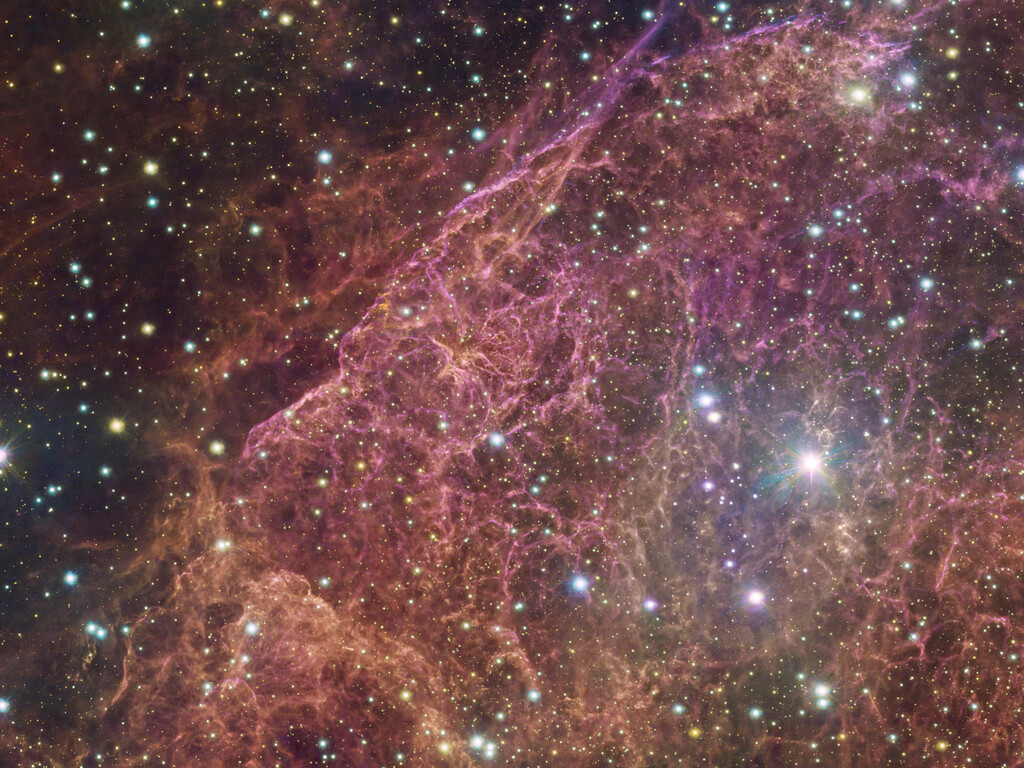| Jase1 | ||
|---|---|---|

|  Nasa scientists are in the ‘home stretch’ to blast off to a $10,000 quadrillion (£7,700 quadrillion) asteroid later this year. Engineers and technicians at Cape Canaveral are preparing the Psyche spacecraft for liftoff, which is slated for October 5. The mission aims to study a space rock that could be worth more than the entire global economy. The craft will journey to the unique metal-rich asteroid orbiting the Sun between Mars and Jupiter some 310,410,000 miles from Earth. The rock, named 16 Psyche, potentially has a core of iron, nickel and gold worth $10,000 quadrillion. Currently, the entire global economy is estimated to be roughly $110 trillion. In a statement, Nasa said: ‘With less than 100 days to go before its launch, teams of engineers and technicians are working almost around the clock to ensure the orbiter is ready to journey 2.5 billion miles to a metal-rich asteroid that may tell us more about planetary cores and how planets form.’  The mission team recently completed a comprehensive test campaign of the flight software and installed it on the spacecraft, clearing the hurdle that kept Psyche from making its original 2022 launch date. ‘The team and I are now counting down the days to launch,’ said Henry Stone, Psyche’s project manager at Nasa’s Jet Propulsion Laboratory in Southern California. ‘Our focus has shifted to safely completing the final mechanical closeout of the spacecraft and preparing the team for operations. The team is conducting numerous training activities to ensure that we are prepared and ready. It’s a very busy time, but everyone is very excited and looking forward to the launch.’ Psyche is set to launch atop a SpaceX Falcon Heavy from Space Launch Complex 39A at the Kennedy Space Center, with additional opportunities scheduled through to 25th October. It will be the Falcon rocket’s first interplanetary launch.  After escaping Earth’s gravity, the Psyche spacecraft will use solar electric propulsion to accomplish its six-year journey to 16 Psyche. Nasa says the asteroid, which measures about 173 miles at its widest point, presents a unique opportunity to explore a metal-rich body that may be part of a core of a planetesimal, the building block of an early planet. Once the spacecraft reaches Psyche in the main asteroid belt between Mars and Jupiter, it will spend at least 26 months orbiting the rock, gathering images and other data that will tell scientists more about its history and what it is made of. ‘We are moving forward,’ said Luis Dominguez, the systems and electrical lead for assembly, test, and launch operations. ‘We’re confident that when we’re on the pad, we’ll be ready to hit the button. For all of us, we’ll be excited to launch this bird.’ | |
Like 8 | ||
| Post liked by - DarkAngie | ||
| Beowulf | ||
|---|---|---|

|  Looking like an elegant abstract art piece painted by talented hands, this picture is actually a NASA/ESA Hubble Space Telescope image of a small section of the Carina Nebula. Part of this huge nebula was documented in the well-known Mystic Mountain picture (heic1007a) and this picture takes an even closer look at another piece of this bizarre astronomical landscape (heic0707a).  The Carina Nebula itself is a star-forming region about 7500 light-years from Earth in the southern constellation of Carina (The Keel: part of Jason’s ship the Argo). Infant stars blaze with a ferocity so severe that the radiation emitted carves away at the surrounding gas, sculpting it into strange structures. The dust clumps towards the upper right of the image, looking like ink dropped into milk, were formed in this way. It has been suggested that they are cocoons for newly forming stars.  The Carina Nebula is mostly made from hydrogen, but there are other elements present, such as oxygen and sulphur. This provides evidence that the nebula is at least partly formed from the remnants of earlier generations of stars where most elements heavier than helium were synthesised.  The brightest stars in the image are not actually part of the Carina Nebula. They are much closer to us, essentially being the foreground to the Carina Nebula’s background.  This picture was created from images taken with Hubble’s Wide Field Planetary Camera 2. Images through a blue filter (F450W) were coloured blue and images through a yellow/orange filter (F606W) were coloured red. The field of view is 2.4 by 1.3 arcminutes.  Credit: ESA/Hubble & NASA & Beowulf  | |
Like 8 | ||
| Post liked by - DarkAngie | ||
| Jase1 | ||
|---|---|---|

|  Can you see the chameleon in this picture? No? Well, it's camouflaged! Yes, we are joking, but this Picture of the Week actually shows the Chamaeleon Cloud, or IC 2631. In the southern hemisphere, this cloud is visible in the sky for most of the year, and in this image, captured by ESO’s Visible and Infrared Survey Telescope for Astronomy (VISTA), you can admire it in infrared light. IC 2631 is a reflection nebula made of dust clouds that reflect the light emitted from nearby stars. The nebula is mainly illuminated by one of the youngest, most massive and brightest stars in its neighborhood, HD 97300, visible to the centre-right of the image. The Chamaeleon Cloud is in fact the brightest nebula in the Chamaeleon Complex, a vast region of gas and dust clouds –– much larger than what this image shows –– where numerous newborn and still-forming stars live. The cloud you see here is packed full of star-making material: gas and dust. At optical wavelengths this region contains dark patches where dust completely blocks light from background sources. But this image was captured in infrared light, which can pass through dust almost unimpeded, allowing scientists to peer into the core of this cloud. Credit: ESO/Meingast et al. | |
Like 9 | ||
| Post liked by - DarkAngie | ||
| Jase1 | ||
|---|---|---|

|  It’s easy to think of Earth as a water world, with its vast oceans and beautiful lakes, but compared to many worlds, Earth is particularly wet. Even the icy moons of Jupiter and Saturn have far more liquid water than Earth. Earth is unusual not because it has liquid water but because it has liquid water in the warm habitable zone of the Sun. And as a new study in Nature Communications shows, Earth could be even more unusual than we thought. Water is one of the more common molecules in the universe. Hydrogen is the most abundant element in the cosmos, and oxygen is easily produced as part of the stellar CNO fusion cycle. So we would expect water-rich planets to be plentiful in stellar systems. But that isn’t to say liquid water will be plentiful. In our Solar System, two kinds of worlds have liquid water. Earth and gas giant moons. Like other warm terrestrial planets such as Venus and Mars, Earth had liquid water in its youth. Mars was too small to retain its water. Much of it evaporated into space, while some froze into its surface crust. Venus was large enough to retain water, but its extreme heat boiled much of it off into its thick atmosphere. We still aren’t entirely sure how Earth managed to retain its oceans, but it was likely a combination of a strong magnetic field and an extra helping of water from asteroids and comets during the heavy bombardment period. The icy moons of Jupiter and Saturn are another story. They were far enough from the Sun that they retained the water of their formation. They quickly formed a thick layer of ice to prevent water from evaporating into space. But these moons are small worlds and would have very quickly frozen solid were it not for the tidal forces exerted by their gas giant. Since cold gas planets are likely to have icy moons, the general thought is that we would be far more likely to find life on a Europa-like world than an Earth-like one. But this new study begs to differ. It argues that liquid water is much more likely to be found on super-Earths.  Super-Earths span a mass range from a couple of Earth masses to Neptune mass. On the large end, they are likely to be gassy worlds with thick atmospheres. On the small end, they are likely to be more Earth-like. Based on the exoplanets we’ve found so far, super-Earths are by far the most common. And a majority of them are likely to be outside their star’s habitable zone in the cold regions of the star system. So they are likely water-rich. But they also aren’t likely to be found orbiting a gas giant, so it’s generally been assumed that their ice layer would be mostly frozen solid over time. The reason has to do with the various freezing and melting points of ice. The kind of ice we have on Earth melts at around 0 degrees Celsius. But this is only true around Earth’s atmospheric pressure. At higher pressures, there are several varieties of ice with differing melting points. Although it’s a bit complicated, generally, at higher pressures, ice can have a much higher melting point. So even if a super-Earth is geologically active, it might not be warm enough to melt ice. This new study shows that super-Earths don’t have to be hot enough to create a deep ocean. Through geothermal and nuclear heating, it can melt a thin layer of water at its surface, and thanks to fissures and various water phase transitions, water can creep up to the layer just below the frozen surface. This process would be enough to create a rich ocean layer of liquid water. Since the heat of a super-Earth lasts billions of years, it could maintain a liquid ocean long enough for life to evolve. Based on what we know about exoplanets, super-Earth oceans could be 100 times more common than those of Earth-like worlds or icy moons. And that means life has even more possible homes than we thought. | |
Like 8 | ||
| Post liked by - DarkAngie | ||
| Beowulf | ||
|---|---|---|

|  Sometimes dramatic events are needed to create something stunning. This beautiful structure of filaments and clouds in the southern constellation of Vela are all that remains of a massive star that died in a powerful explosion known as supernova. This is a small section of a larger image taken using the wide-field camera OmegaCAM at the VLT Survey Telescope (VST). Hosted at ESO’s Paranal Observatory in the Chilean desert, the VST is one of the best telescopes in the world to take large images of the sky in visible light.  Even though bright stars populate this image, it's hard to not be captivated by the pink gaseous clouds filling up the frame. Some tiny, others thicker, the filaments stretch outwards like tentacles. As they intertwine and cling together, an intricate network is formed which mixes with blurred clouds. But how did they come to be like this?  Around 11 000 years ago, a massive star exploded as a supernova, ejecting its outer layers. The explosion also generated shock waves which traveled outwards, compressing the gas around the star and creating the intricate network visible in the image. The result of such explosions are called supernova remnants. At 800 light years away from Earth, the Vela supernova remnant is one of the closest known to us.  Credit: ESO/VPHAS+ team. Acknowledgement: Cambridge Astronomical Survey Unit & Beowulf  | |
Like 8 | ||
| Post liked by - DarkAngie | ||
| Jase1 | ||
|---|---|---|

|  The tranquil spiral galaxy UGC 12295 basks leisurely in this image from the NASA/ESA Hubble Space Telescope. This galaxy lies around 192 million light-years away in the constellation Pisces and is almost face-on when viewed from Earth, displaying a bright central bar and tightly wound spiral arms. Despite its tranquil appearance, UGC 12295 played host to a catastrophically violent explosion – a supernova – detected in 2015. Supernovae are the explosive deaths of massive stars and are responsible for forging many of the elements found here on Earth. Two different teams of astronomers used Hubble’s Wide Field Camera 3 to observe UGC 12295 and sift through the wreckage of this vast stellar explosion. The first team examined the supernova’s detritus to better understand the evolution of matter in our universe. The second team of astronomers also explored the aftermath of UGC 12295’s supernova, but their investigation focused on returning to the sites of some of the best-studied nearby earlier supernovae. Hubble’s keen vision can reveal lingering traces of these energetic events, shedding light on the nature of the systems that host them. Image credit: ESA/Hubble & NASA, A. Filippenko, J. Lyman | |
Like 7 | ||
| Post liked by - DarkAngie | ||
| Jase1 | ||
|---|---|---|

|  The Crew Module Test Article (CMTA), a full-scale mockup of NASA’s Orion spacecraft, is seen in the waters of the Pacific Ocean on July 26, 2023, during the first in a series of tests conducted by NASA and the Department of Defense to demonstrate and evaluate the processes, procedures, and hardware for recovery operations for crewed Artemis missions. This test is the first specifically in support of the Artemis II mission and allowed the team to practice what it will be like to recover astronauts and get them back to the recovery ship safely. | |
Like 8 | ||
| Post liked by - DarkAngie | ||
| Beowulf | ||
|---|---|---|

|  The glittering, glitzy contents of the globular cluster NGC 6652 sparkle in this star-studded image from the NASA/ESA Hubble Space Telescope. The core of the cluster is suffused with the pale blue light of countless stars, and a handful of particularly bright foreground stars are adorned with criss-crossing diffraction spikes. NGC 6652 lies in our own Milky Way galaxy in the constellation Sagittarius, just under 30 000 light-years from Earth and only 6500 light-years from the Galactic centre.  Globular clusters are stable, tightly gravitationally bound clusters containing anywhere between tens of thousands and millions of stars. The intense gravitational attraction between the closely packed stars in globular clusters is what gives these star-studded objects their regular, spherical shape.  This image combines data from two of Hubble’s third-generation instruments; the Advanced Camera for Surveys and Wide Field Camera 3. As well as two instruments, this image draws on two different observing programmes from two different teams of astronomers. The first team set out to survey globular clusters in the Milky Way galaxy in the hope of shedding light on topics ranging from the ages of these objects to the gravitational potential of the galaxy as a whole. The second team of astronomers used a trio of exquisitely sensitive filters in Hubble’s Wide Field Camera 3 to disentangle the proportions of carbon, nitrogen, and oxygen in globular clusters such as NGC 6652.  [Image Description: A dense spherical cluster of stars. The stars merge into a bright core in the centre, and spread out to the edges gradually, giving way to an empty, dark background. Most of the stars are small points of light. A few stars with cross-shaped diffraction spikes appear larger, and stand out in front.  Credit: ESA/Hubble & NASA, A. Sarajedini, G. Piotto & Beowulf  | |
Like 9 | ||
| Post liked by - DarkAngie | ||
| Jase1 | ||
|---|---|---|

|  On April 28, 2023, the Crew-7 members (from left, Roscosmos cosmonaut Konstantin Borisov, European Space Agency astronaut Andreas Mogensen, NASA astronaut Jasmin Moghbeli, and Japan Aerospace Exploration Agency astronaut Satoshi Furukawa) took a moment to snap a photo atop an emergency egress vehicle at NASA's Kennedy Space Center in Florida. Crew-7 will launch to the International Space Station on Monday, Aug. 21. will fly aboard the SpaceX Dragon spacecraft, named Endurance, which previously flew NASA’s SpaceX Crew-3 and Crew-5 missions to the space station. Follow NASA’s commercial crew blog for the latest information on Crew-7 flight readiness. | |
Like 7 | ||
| Post liked by - DarkAngie | ||
| imonline | ||
|---|---|---|
|  If you open the image full screen, at the bottom in the middle, you'll see the question mark. https://www.techeblog.com/james-webb-space-telescope-question-mark/ | |
Like 6 | ||
| Post liked by - DarkAngie | ||
| Jase1 | ||
|---|---|---|

|  United Arab Emirates astronaut Sultan Alneyadi captured this image of the city lights of Baghdad, Iraq, and the Tigris River on July 18, 2023, as the International Space Station orbited 261 miles above the Middle Eastern nation. Since the station became operational in November 2000, crew members have produced hundreds of thousands of images of the land, oceans, and atmosphere of Earth, and even of the Moon through Crew Earth Observations. Their photographs of Earth record how the planet changes over time due to human activity and natural events. Image Credit: NASA | |
Like 8 | ||
| Post liked by - DarkAngie | ||
| Jase1 | ||
|---|---|---|

|  The Ring Nebula is a glowing gas-filled donut in the latest JWST snap The James Webb Space Telescope (JWST) has just headed into its second year in service, and recently recorded new images of the Ring Nebula named Messier 57. This nebula is about 2,600 light-years away from Earth, located in the Lyra constellation. The images were released by an international team of astronomers who are part of the JWST Ring Nebula Project. The Ring Nebula is a common target for space enthusiasts and is known for a donut-shaped ring of dust and gas that can even be viewed with backyard telescopes in the summer months. “I first saw the Ring Nebula as a kid through just a small telescope,” Western University astrophysicist and member of the JWST Ring Nebula Imaging Project Jan Cami said in a statement. “I would never have thought that one day, I would be part of the team that would use the most powerful space telescope ever built, to look at this object.” Messier 57 is known as a planetary nebula. These objects are the colorful remnants of dying stars that have tossed a majority of their mass at the end of their stellar lives. Nebulae like the Ring Nebula come in a variety of shapes and patterns, from something that looks like a lobster, to expanding bubbles, to cotton candy-like clouds. The Ring Nebula’s vibrant colors are shown in a whole new light with JWST’s NIRcam. “We are amazed by the details in the images, better than we have ever seen before. We always knew planetary nebulae were pretty. What we see now is spectacular,” University of Manchester astrophysicist Albert Zijlstra said in a statement.  A close-up of the southern part of the outer halo, the part outside the main ring. The team finds several hundred linear features, pointing approximately at the central star. Their origin is not yet clear. How a single star can create such a complex nebula is not well understood. JWST will be used to study the structure, and the origin of the clumps and stripes. In the background, thousands of more distant, numerous faint galaxies can be seen, some with clear spiral structure. CREDIT: The University of Manchester. The patterns in the Ring Nebula are the consequence of a complicated array of different physical properties that astronomers are still figuring out. The light from its hot and central star is illuminating the layers in the pattern. Similar to fireworks, different chemical elements within the Ring Nebula emit specific light colors. The colors help scientists understand the chemical evolution of these objects in better detail. “These images hold more than just aesthetic appeal; they provide a wealth of scientific insights into the processes of stellar evolution. By studying the Ring Nebula with JWST, we hope to gain a deeper understanding of the life cycles of stars and the elements they release into the cosmos,” member and co-lead scientist of the JWST Ring Nebula Imaging Project Nick Cox said in a statement. Investigating Messier 57 in this detail can also help astronomers better understand the sun. When stars of similar sizes to our solar system’s central star run out of the fuel needed for nuclear fusion, they can’t support themselves against their own gravity. This ends the balancing forces that kept the star stable for millions to billions of years. The star’s outer layers are blasted outward as the core collapses, since nuclear fusion is still occurring in these outside layers. The star will initially become a red giant, which is expected to happen to our sun in about five billion years. Eventually, the outer shells will cool and disperse in the variety of shapes nebulae are famous for. “We are witnessing the final chapters of a star’s life, a preview of the Sun’s distant future so to speak, and JWST’s observations have opened a new window into understanding these awe-inspiring cosmic events,” astronomer and co-lead scientist of the JWST Ring Nebula Imaging Project Mike Barlow from University College London said in a statement. “We can use the Ring Nebula as our laboratory to study how planetary nebulae form and evolve.” | |
Like 9 | ||
| Post liked by - DarkAngie | ||
| Beowulf | ||
|---|---|---|

|  This stunning image by the NASA/ESA Hubble Space Telescope features the spiral galaxy NGC 5643 in the constellation of Lupus (The Wolf). Looking this good isn’t easy; thirty different exposures, for a total of 9 hours observation time, together with the high resolution and clarity of Hubble, were needed to produce an image of such high level of detail and of beauty. NGC 5643 is about 60 million light-years away from Earth and has been the host of a recent supernova event (not visible in this latest image). This supernova (2017cbv) was a specific type in which a white dwarf steals so much mass from a companion star that it becomes unstable and explodes. The explosion releases significant amounts of energy and lights up that part of the galaxy. This stunning image by the NASA/ESA Hubble Space Telescope features the spiral galaxy NGC 5643 in the constellation of Lupus (The Wolf). Looking this good isn’t easy; thirty different exposures, for a total of 9 hours observation time, together with the high resolution and clarity of Hubble, were needed to produce an image of such high level of detail and of beauty.  NGC 5643 is about 60 million light-years away from Earth and has been the host of a recent supernova event (not visible in this latest image). This supernova (2017cbv) was a specific type in which a white dwarf steals so much mass from a companion star that it becomes unstable and explodes. The explosion releases significant amounts of energy and lights up that part of the galaxy.  The observation was proposed by Adam Riess, who was awarded a Nobel Laureate in physics 2011 for his contributions to the discovery of the accelerating expansion of the Universe, alongside Saul Perlmutter and Brian Schmidt. This stunning image by the NASA/ESA Hubble Space Telescope features the spiral galaxy NGC 5643 in the constellation of Lupus (The Wolf). Looking this good isn’t easy; thirty different exposures, for a total of 9 hours observation time, together with the high resolution and clarity of Hubble, were needed to produce an image of such high level of detail and of beauty.  NGC 5643 is about 60 million light-years away from Earth and has been the host of a recent supernova event (not visible in this latest image). This supernova (2017cbv) was a specific type in which a white dwarf steals so much mass from a companion star that it becomes unstable and explodes. The explosion releases significant amounts of energy and lights up that part of the galaxy.  The observation was proposed by Adam Riess, who was awarded a Nobel Laureate in physics 2011 for his contributions to the discovery of the accelerating expansion of the Universe, alongside Saul Perlmutter and Brian Schmidt.  Credit: ESA/Hubble & NASA, A. Riess et al. & Beowulf  Acknowledgement: Mahdi Zamani | |
Like 8 | ||
| Post liked by - DarkAngie | ||
| Jase1 | ||
|---|---|---|

|  NASA's New Horizons spacecraft captured this high-resolution enhanced color view of Charon, Pluto's largest moon, just before closest approach on July 14, 2015. The image combines blue, red, and infrared images taken by the spacecraft's Ralph/Multispectral Visual Imaging Camera (MVIC); the colors are processed to best highlight the variation of surface properties across Charon. New Horizons conducted a six-month-long reconnaissance flyby study of Pluto and its moons in summer 2015, helping us understand worlds at the edge of our solar system, then venturing deeper into the distant, mysterious Kuiper Belt – a relic of solar system formation. The spacecraft is now more than 5 billion miles from Earth and uses machine-learning AI software to make searches beyond the Kuiper Belt much faster and more productive. | |
Like 8 | ||
| Post liked by - DarkAngie | ||
| Beowulf | ||
|---|---|---|

|  The lenticular galaxy NGC 6684 bathes this image from the NASA/ESA Hubble Space Telescope in a pale light. Captured with Hubble’s Advanced Camera for Surveys, this lenticular galaxy is around 44 million light-years from Earth in the constellation Pavo. Pavo — whose name is Latin for peacock — is a constellation in the southern sky and one of four constellations collectively known as the Southern Birds.  Lenticular galaxies like NGC 6684 (lenticular means lens-shaped) possess a large disc but lack the prominent spiral arms of galaxies like the Andromeda Galaxy. This leaves them somewhere between elliptical galaxies and spiral galaxies, and lends these galaxies a diffuse, ghostly experience. NGC 6684 also lacks the dark dust lanes that thread through other galaxies, adding to its spectral, insubstantial appearance.  The data in this image were captured during a census of the nearby Universe entitled Every Known Nearby Galaxy which aims to observe all galaxies within 10 megaparsecs (32.6 million light-years) that the telescope has not already visited. Before this programme began Hubble had observed roughly 75% of these nearby galaxies, and completing this census will reveal insights into the stars making up a wide variety of galaxies, in a wide variety of environments.  [Image Description: A galaxy, large and occupying most of the view from the centre. The whole galaxy is made of smooth, diffuse light. The galaxy is surrounded by a smoky grey halo. Many stars shine around the galaxy, on a black background.  Credit: ESA/Hubble & NASA, R. Tully & Beowulf  | |
Like 7 | ||
| Post liked by - DarkAngie | ||
| Jase1 | ||
|---|---|---|

|  Mars is spinning faster and it's gradually cutting short the length of each Martian day, scientists have found. The red planet is accelerating at about four milliarcseconds per year, bringing the days to a close a fraction of a millisecond earlier. As those measurements would suggest, the changes are subtle - but the scientists who observed them are not sure what the cause is. Potential causes could be ice accumulating on the planet's polar caps or post-glacial rebound, which is when land masses rise after being buried by ice. NASA says such shifts in a planet's mass can cause it to accelerate - a bit like an ice skater spinning with their arms stretched out, then pulling their arms in. Scientists detected the shift in spin speed using data from NASA's InSight Mars lander, which operated on the surface for four years until running out of power last December. Sebastien Le Maistre, lead author of a paper documenting the findings in the Nature journal, said the variations were "just a few tens of centimetres over the course of a Martian year". "It takes a very long time and a lot of data to accumulate before we can even see these variations," he added. The paper examined data from InSight's first 900 days on Mars. The lander's advanced radio technology, coupled with NASA's Deep Space Network (an international array of giant radio antennas back on Earth), worked together to provide scientists with observations. They would beam a radio signal to the lander using the antennas, which would then be reflected back to Earth. When scientists received the reflected signal, they would look for small changes in frequency to determine how fast Mars rotates. Mr Le Maistre said the "historic experiment" was just the tip of the iceberg so far as the data InSight had collected. There is still "a lot to reveal" and further information will be mined for years to come. | |
Like 8 | ||
| Post liked by - Garthock | ||
| Beowulf | ||
|---|---|---|

|  The galaxy depicted in this Picture of the Week is a barred spiral known as NGC 7541, seen here as viewed by the NASA/ESA Hubble Space Telescope, in the constellation of Pisces (The Fishes).  A barred spiral is a galaxy with whirling, pinwheeling, spiral arms, and a bright centre that is intersected by a bar of gas and stars. This bar cuts directly through the galaxy’s central region, and is thought to invigorate the region somewhat, sparking activity and fuelling myriad processes that may otherwise have never occurred or have previously ground to a halt (star formation and active galactic nuclei being key examples). We think bars exist in up to two-thirds of all spiral galaxies, including our own home, the Milky Way.  NGC 7541 is actually observed to have a higher-than-usual star formation rate, adding weight to the theory that spiral bars act as stellar nurseries, corralling and funnelling inwards the material and fuel needed to create and nurture new baby stars. Along with its nearby companion NGC 7537, the galaxy makes up a pair of galaxies located about 110 million light-years away from us.  Credit: ESA/Hubble & NASA, A. Riess et al. & Beowulf  | |
Like 6 | ||
| Post liked by - Garthock | ||
| Jase1 | ||
|---|---|---|

|  This Picture of the Week — taken with ESO’s Visible and Infrared Survey Telescope (VISTA) at Paranal Observatory in Chile — might look like a scene from a snowy winter's night, but it’s not. It’s an infrared image of NGC 6723, a globular cluster located about 28 000 light years from Earth in the constellation Sagittarius. Globular clusters are spherical-shaped groups of stars, tightly bound together by gravity. Their name is derived from the Latin word globulus, meaning small sphere — somewhat misleading given that NGC 6723, as most globular clusters, contains hundred of thousands to millions of stars. So far, astronomers have found more than 150 globular clusters in our galaxy, the Milky Way, with most of them estimated to be at least 10 billion years old and hosting some of the oldest stars in the galaxy. Globular clusters were key to pinpointing our own location within the Milky Way in the early 20th century. American astronomer Harlow Shapley measured the distances to several globular clusters, and noticed that they were arranged in a roughly spherical distribution, but the Sun was not at its centre. He correctly inferred that the heart of the Milky Way lays at the centre of this distribution of globular clusters, placing the Sun in the suburbs of the galaxy. | |
Like 7 | ||
| Post liked by - Garthock | ||
| Beowulf | ||
|---|---|---|

|  The massive cluster Abell 3322 is featured in this image from the NASA/ESA Hubble Space Telescope, in which the galaxy 2MASX J05101744-4519179 basks in the centre. This distant galaxy cluster is a cosmic leviathan that is highly luminous at X-ray wavelengths. Observing galaxy clusters like Abell 3322 can advance our understanding of the evolution and interactions of dark and luminous matter in galaxy clusters, and also reveals powerful gravitational ‘telescopes’ that magnify distant objects through gravitational lensing. Knowing the location of these lenses can enable future observations with both Hubble and the NASA/ESA/CSA James Webb Space Telescope. The galaxy cluster is located in the constellation Pictor, around 2.6 billion light-years from Earth.  The unusual alignment of the three brightest cluster galaxies in this image (two in a close pair in the centre of the image and a third in the upper right region) suggests that A3322 is observed in the process of formation. This is because at least two smaller clusters collide along an axis defined by the locations of their individual brightest cluster galaxies. However, the diffuse super-hot gas that permeates all massive galaxy clusters (and is visible only at x-ray wavelengths) is understood to be distributed in a single, almost perfectly spherical halo. In other words, it neither exhibits an elongation that follows the three-galaxy lineup, nor does it show signs of two (or more) individual cluster cores. Discrepancies like this are of great interest for astronomers who want to explore the differences in the dynamic behaviour of gas, galaxies, dark matter, and cluster collisions.  Two of Hubble’s instruments joined forces to create this image: Wide Field Camera 3 and the Advanced Camera for Surveys. Both are third-generation instruments that offer superb image quality and high sensitivity to astronomers studying a range of scientific questions. Both instruments provide images of wide areas of the night sky, but view slightly different parts of the electromagnetic spectrum. WFC3 spans the spectrum from the ultraviolet through to visible light and the near-infrared. In contrast to the wide panchromatic coverage of WFC3, ACS was optimised for visible-light observations. Getting the best from Hubble requires instruments to use built-in corrective optics to account for the effects of the primary mirror's aberration. During the construction of Hubble, a faulty instrument caused the primary mirror to be very precisely ground to slightly the wrong shape by only 0.0002 mm. A corrective instrument called COSTAR was developed to account for this tiny discrepancy, and later instruments like WFC3 and ACS were built with their own corrective optics.  [Image Description: A cluster of elliptical galaxies, visible as a crowd of oval shapes, each glowing around a bright core. The elliptical galaxy that appears largest by far is in the centre, with the other largest galaxies close to it. They are surrounded by a variety of more distant stars and galaxies, in many shapes and sizes but all much smaller, on a dark background.  Credit: ESA/Hubble & NASA, H. Ebeling & Beowulf  | |
Like 6 | ||
| Post liked by - Garthock | ||
| mikeeybhoyPosted at 2023-08-20 22:09:11(35Wks ago) Report Permalink URL | ||
|---|---|---|
| Torrent galaxy;I would like to see on youTube with the clever people we have here to represent US.To talk about the Universe and Satellite imagery!!!. That would be Great!! mikeeybhoy! | |
Like 7 | ||
| Post liked by - Garthock | ||
| Beowulf | ||
|---|---|---|

|  The bright variable star V 372 Orionis takes centre stage in this image from the NASA/ESA Hubble Space Telescope, which has also captured a smaller companion star in the upper left of this image. Both stars lie in the Orion Nebula, a colossal region of star formation roughly 1450 light years from Earth.  V 372 Orionis is a particular type of variable star known as an Orion Variable. These young stars experience some tempestuous moods and growing pains, which are visible to astronomers as irregular variations in luminosity. Orion Variables are often associated with diffuse nebulae, and V 372 Orionis is no exception; the patchy gas and dust of the Orion Nebula pervade this scene.  This image overlays data from two of Hubble’s instruments. Data from the Advanced Camera for Surveys and Wide Field Camera 3 at infrared and visible wavelengths were layered to reveal rich details of this corner of the Orion Nebula. Hubble also left its own subtle signature on this astronomical portrait in the form of the diffraction spikes surrounding the bright stars.  These prominent artefacts are created by starlight interacting with Hubble’s inner workings, and as a result they reveal hints of Hubble’s structure. The four spikes surrounding the stars in this image are created by four vanes inside Hubble supporting the telescope’s secondary mirror. The diffraction spikes of the NASA/ESA/CSA James Webb Space Telescope, on the other hand, are six-pointed as a result of Webb’s hexagonal mirror segments and 3-legged support structure for the secondary mirror.  [Image description: Two very bright stars with cross-shaped diffraction spikes are prominent: the larger is slightly lower-right of centre, the smaller lies towards the upper-left corner. Small red stars with short diffraction spikes are scattered around them. The background is covered nearly completely by gas: smoky, bright blue gas around the larger star in the centre and lower-right, and wispier red gas elsewhere.  Credit: ESA/Hubble & NASA, J. Bally, M. Robberto & Beowulf  | |
Like 7 | ||
| Post liked by - Garthock | ||
| Beowulf | ||
|---|---|---|

|  The protostellar object OH 339.88-1.26, which lies 8 900 light-years from Earth in the constellation Ara, lurks in this dust-filled image from the NASA/ESA Hubble Space Telescope. Winding lanes of dark dust thread through this image, which is also studded with bright stars crowned with criss-crossing diffraction spikes.  The dark vertical streak at the centre of this image hides OH 339.88-1.26, which is an astrophysical maser. A maser — which is an acronym for “microwave amplification by stimulated emission of radiation” — is essentially a laser that produces coherent light at microwave wavelengths. Such objects can occur naturally in astrophysical situations, in environments ranging from the north pole of Jupiter to star-forming regions such as the one pictured here.  This image comes from a set of Hubble observations that peer into the hearts of regions where massive stars are born to constrain the nature of massive protostars and test theories of their formation. Astronomers turned to Hubble’s Wide Field Camera 3 to explore the massive protostar G339.88-1.26, which is estimated to be about 20 times the mass of the Sun and is lurking in the dusty clouds in the center of the image.  The Hubble observations were supported by other state-of-the-art observatories including ALMA, the Atacama Large Millimeter/submillimeter Array. ALMA is composed of 66 moveable high-precision antennas which can be arranged over distances of up to 16 kilometres on a plateau perched high in the Chilean Andes. Further data were contributed by the Stratospheric Observatory For Infrared Astronomy (SOFIA), which is a telescope that — until recently — operated out of a converted 747 aircraft.  [Image Description: The field is filled with hundreds of bright stars. They are primarily blue in colour, with scattered smaller stars visible in yellow/orange. The background is dominated by cloudy grey dust, with permeating regions of dark black and orange.  Credit: ESA/Hubble & NASA, J. C. Tan (Chalmers Univ. & Univ. of Virginia) & the great Master Beowulf  | |
Like 5 | ||
| Post liked by - Garthock | ||
| Soup | ||
|---|---|---|

| New supernova remnant detected with ASKAP by Tomasz Nowakowski  ASKAP image of the Galactic SNR G288.8–6.3 at 943 MHz. Credit: Filipović et al., 2023. Using the Australian Square Kilometer Array Pathfinder (ASKAP), an international team of astronomers has serendipitously detected a new Galactic supernova remnant (SNR), which received designation SNR G288.8–6.3. The finding was reported in a paper published August 17 on the pre-print server arXiv. SNRs are diffuse, expanding structures resulting from a supernova explosion. They contain ejected material expanding from the explosion and other interstellar material that has been swept up by the passage of the shockwave from the exploded star. Studies of supernova remnants are important for astronomers, as they play a key role in the evolution of galaxies, dispersing the heavy elements made in the supernova explosion and providing the energy needed for heating up the interstellar medium. SNRs are also believed to be responsible for the acceleration of galactic cosmic rays. Now, a group of astronomers led by Miroslav D. Filipović of the Western Sydney University in Australia reports the discovery of a new nearby SNR. The finding was made using 36 ASKAP antennas at the central frequency of 943.4 MHz and bandwidth of 288 MHz, as part of the ASKAP-Evolutionary Map of the Universe (EMU) survey. "We have serendipitously found a large-scale object in our new ASKAP-EMU survey, which we classify as the new Galactic SNR G288.8–6.3," the researchers wrote in the paper. SNR G288.8–6.3 has an intrinsic size of about 130 light years and a spectral index of -0.41—typical for known SNRs. The remnant is located some 4,200 light years away from the Earth and is positioned about 456 light years above the Galactic plane. Therefore, SNR G288.8–6.3 turns out to be one the largest and closest Galactic supernova remnants. The spectral index of SNR G288.8–6.3 suggests that this remnant represents the evolutionary advanced SNR population in the late adiabatic or in the radiative phase of evolution. Moreover, SNR G288.8–6.3 has a relatively low radio surface brightness, what, together with other properties, points to an age of about 13,000 years. According to the paper, shock-compression of the magnetic field in SNR G288.8–6.3 is sufficient to produce large enough magnetic fields to explain the synchrotron emission of the SNRs. Furthermore, based on the study of neutral atomic hydrogen (HI), the astronomers found a cavity-like distribution and possible evidence for the shock-cloud interaction in this remnant. Summing up the results, the authors of the paper propose further in-depth polarimetric and multifrequency observations of SNR G288.8–6.3 in order to get more insights into the nature of this intriguing newfound SNR. "Future in-depth polarimetric and multifrequency studies will enhance our knowledge of this large angular size Galactic object," the researchers concluded. | |
Like 7 | ||
| Post liked by - Garthock | ||
| Soup | ||
|---|---|---|

| A new method helps to measure cosmological distances more accurately by University of Córdoba  Recreation of Baryon Acoustic Oscillations. Credit: Recreation of Baryon Acoustic Oscillations. (Zosia Rostomian, Lawrence Berkeley National Laboratory). After a complex statistical analysis of some one million galaxies, a team of researchers at several Chinese universities, and the University of Cordoba was able to publish the results of the study in the journal Nature Astronomy. For over two years, they had been working on the project, which will make possible the determination of cosmological distances with a new and greater degree of precision. The study developed a new method to detect what are called Baryon Acoustic Oscillations (BAO). These waves, whose existence was first demonstrated in 2005, are one of the few traces of the Big Bang that can still be detected in the cosmos. They spread during the first 380,000 years of the universe's life, expanding like sound waves through matter so hot that it behaved like a fluid, something similar to what happens when a stone is thrown into a pond. Subsequently, the universe expanded and cooled to the point that those waves were frozen in time. The interesting thing about these oscillations, witnesses to almost the entire history of the cosmos, is that their exact duration is known, so they are currently very useful for measuring cosmological distances based on the separation between galaxies. Being able to detect them and determine their size is, therefore, of the utmost importance to correctly map the universe out to very distant points. "The results of this study now allow us to detect these waves through a new and independent method. By combining the two, we can determine cosmic distances with greater precision," explained Antonio J. Cuesta, a researcher at the University of Cordoba's Department of Physics and the sole Spanish author on the study. The new method: Looking for anomalies in the orientation of galaxies This new study analyzed, using statistical methods, a database of approximately one million galaxies, paying special attention to two very different factors: the ellipticity of the galaxies and the density around them. In terms of their orientations, galaxies normally stretch to where there are a greater number of other galaxies, due to the pull of gravity, but there are certain places in the universe where this effect is not as intense. "It is in those points, where galaxies do not point where they should, where statistics tell us that the Baryon Acoustic Oscillations are located, since these waves also act as points of gravity attraction," explained Antonio J. Cuesta. Looking out far, looking into the past "The first practical application that this study could have is to establish more precisely where the galaxies are located, and the separation between them and the Earth, but, in a way, we are also gazing into the past," the researcher explained. This new approach to Baryon Acoustic Oscillations, key to answering some of the great questions about the universe, opens new doors in the world of astronomy. Establishing cosmological distances offers, in turn, new clues about the history of the universe's expansion and helps us to understand its composition in terms of dark matter and energy, two of the most elusive and enigmatic components of the cosmos. | |
Like 8 | ||
| Post liked by - Garthock | ||
| Beowulf | ||
|---|---|---|

|  This peculiar galaxy, beautifully streaked with tendrils of reddish dust, is captured here in wonderful detail by the NASA/ESA Hubble Space Telescope.  The galaxy is known as NGC 1022, and is officially classified as a barred spiral galaxy. You can just about make out the bar of stars in the centre of the galaxy in this image, with swirling arms emerging from its ends. This bar is much less prominent than in some of the galaxy’s barred cousins and gives the galaxy a rather squat appearance; but the lanes of dust that swirl throughout its disc ensure it is no less beautiful.  Hubble observed this image as part of a study into one of the Universe’s most notorious residents: black holes. These are fundamental components of galaxies, and are thought to lurk at the hearts of many — if not all — spirals. In fact, they may have quite a large influence over their cosmic homes. Studies suggest that the mass of the black hole sitting at a galaxy’s centre is linked with the larger-scale properties of the galaxy itself. However, in order to learn more, we need observational data of a wider and more diverse range of galaxies — something Hubble’s study aims to provide.  Credit: ESA/Hubble & NASA, A. Seth & the great Master Beowulf  | |
Like 6 | ||
| Post liked by - Garthock | ||






































